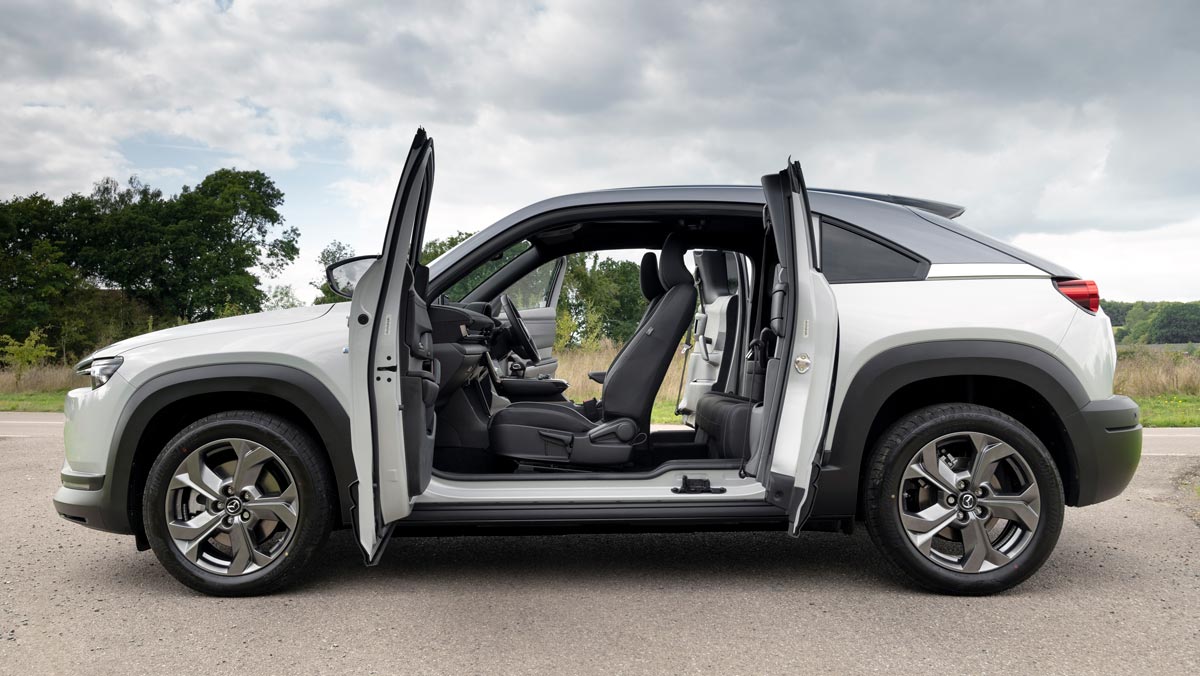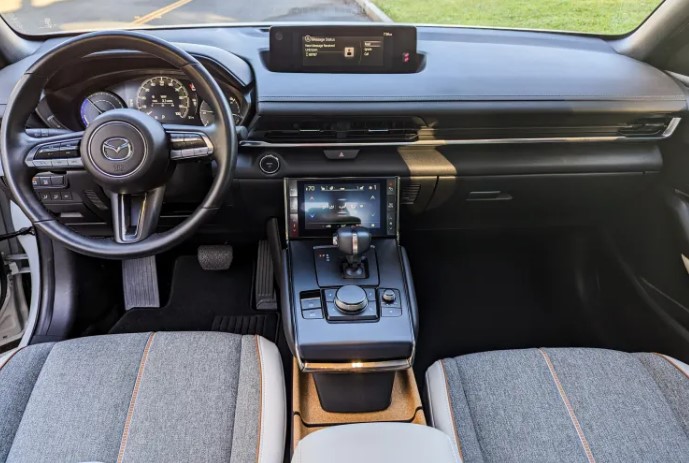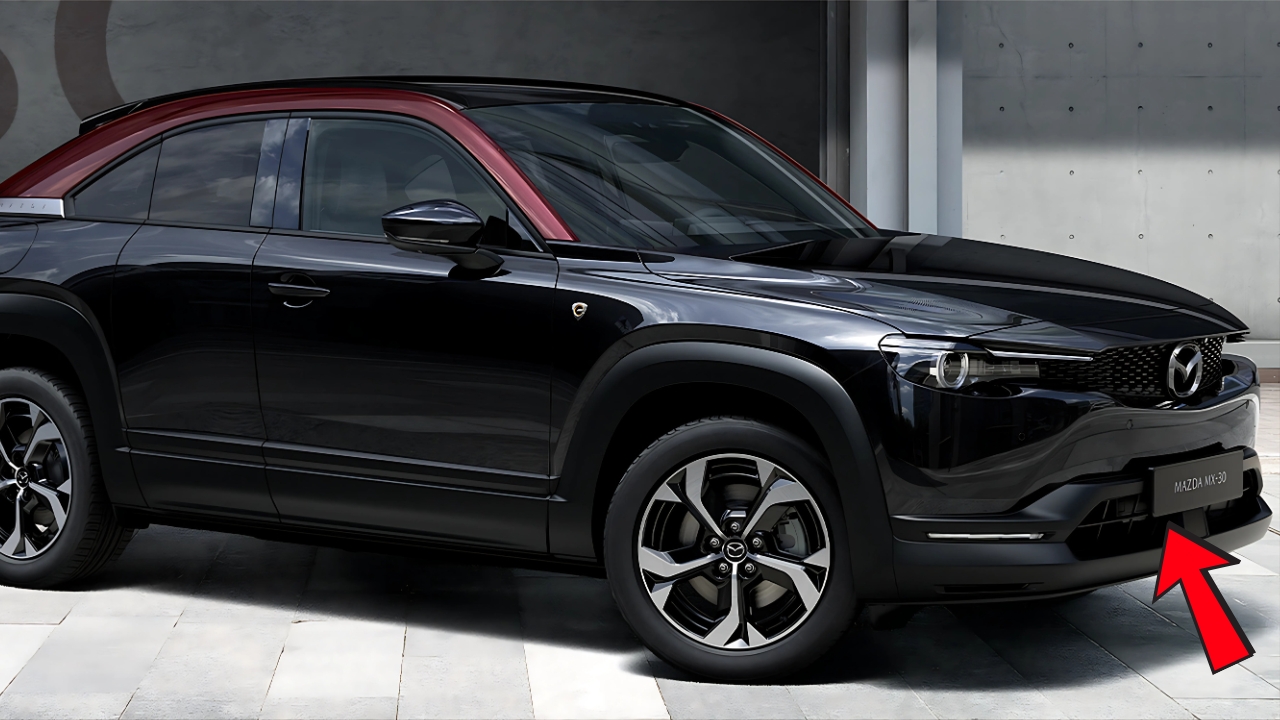Mazda MX-30: The automotive landscape is littered with well-intentioned vehicles that simply missed the mark, and Australia’s relationship with the Mazda MX-30 Electric stands as a prime example of how good design can’t overcome fundamental market misalignment.
After just three years on the Australian market, Mazda has quietly withdrawn this quirky electric crossover, leaving behind a trail of heavily discounted demonstrator models and a valuable lesson about understanding your target audience.
The Promise That Couldn’t Deliver

When Mazda introduced the MX-30 to Australian shores in 2021, it carried the weight of being the Japanese manufacturer’s first serious foray into electric vehicle territory.
The company positioned it as an experimental vehicle – hence the “MX” designation that previously graced sports cars like the beloved MX-5. However, this experiment would prove costly in more ways than one.
The fundamental issue wasn’t with Mazda‘s engineering prowess or design philosophy. The MX-30 actually offered genuinely interesting features that set it apart from the increasingly homogeneous EV marketplace.
Its distinctive “freestyle doors” – borrowed from the legendary RX-8 sports car – created an undeniably dramatic entry experience. The interior showcased Mazda’s commitment to sustainability through clever use of recycled materials and cork trim that nodded to the company’s historical roots as a cork manufacturer.
Understanding the Australian Context
To grasp why the MX-30 struggled so dramatically in Australia, we need to understand the unique challenges of the local market. Australia’s vast distances and relatively sparse charging infrastructure create a perfect storm for range anxiety.
Unlike European urban centers where the MX-30 was designed to operate, Australian drivers regularly face journeys that would challenge even the most optimistic range estimates.
The Numbers Game: Where MX-30 Lost Ground

The statistics surrounding the MX-30’s Australian adventure tell a sobering story. Let’s break down the key figures that explain why this vehicle never found its footing in the local market.
| Specification | Mazda MX-30 Electric | Hyundai Kona Electric | MG ZS EV | Tesla Model 3 |
|---|---|---|---|---|
| Price (Drive-Away) | $71,000+ | $65,000 | $47,000 | $70,000 |
| Range (ADR) | 224km | 449km | 263km | 491km |
| Battery Capacity | 35.5kWh | 64kWh | 44.5kWh | 60kWh |
| DC Fast Charging | 50kW | 77kW | 90kW | 170kW |
| Motor Power | 107kW | 150kW | 130kW | 208kW |
The Sales Reality
The market response was swift and unforgiving. Over two years (2021-2022), only 1,752 MX-30 vehicles found Australian buyers across all variants. To put this in perspective, Mazda’s CX-30 – the conventional SUV that shares the MX-30’s platform – sold over 27,000 units in the same period. Of the total MX-30 sales, only around 100 were the full electric version, with Mazda initially importing just 100 units to test market appetite.
The writing was on the wall when demonstrator models with as little as 200 kilometres on the odometer began appearing on classified websites for $55,990 – representing discounts of up to $15,000 from the original drive-away pricing. This level of depreciation typically takes years to manifest, not months.
The Philosophical Divide
Mazda’s approach to electric vehicle development fundamentally clashed with Australian consumer expectations. The company’s philosophy centred around creating a “right-sized” battery that would encourage more sustainable driving patterns while reducing environmental impact through smaller battery production requirements. This thinking worked well in densely populated European markets but ignored the practical realities of Australian geography.
Engineering Versus Market Demands
The 35.5kWh battery pack represented careful engineering decisions aimed at optimising weight distribution and maintaining Mazda’s signature driving dynamics. However, Australian consumers weren’t interested in philosophical debates about battery sizing when competitors offered nearly double the range for similar money.
The comparison with the Hyundai Kona Electric proved particularly damaging. For $6,000 less than the MX-30, buyers could access twice the range and significantly faster charging capabilities. The Tesla Model 3, despite its unconventional interior, offered similar pricing with more than double the range and access to the most comprehensive charging network in the country.
Beyond the Range Issue
While range anxiety dominated discussions about the MX-30, other practical considerations contributed to its market failure. The distinctive freestyle doors, while visually striking, created real-world inconveniences. Rear passengers couldn’t exit without front occupants opening their doors first – a particular problem in tight parking spaces or when front seat occupants weren’t ready to leave.
The rear seating area felt cramped despite the vehicle’s SUV proportions, and the high window sills created a claustrophobic atmosphere that some buyers found off-putting. These design choices might have been forgiven in a more affordable vehicle, but at over $70,000 drive-away, consumers expected uncompromised practicality.
The Charging Infrastructure Challenge
Even with perfect range, the MX-30 faced infrastructure challenges that Mazda hadn’t adequately addressed. The 50kW maximum DC fast charging speed meant that even rapid charging sessions took considerably longer than competitors. In a market where charging infrastructure was still developing, every minute mattered to potential EV converts.
The Aftermath and Lessons Learned
Mazda Australia’s managing director acknowledged that the MX-30’s performance was “as expected” for what they considered a niche offering. However, the company gained valuable experience in EV technology and customer preferences that informed their subsequent electrification strategy. The lessons learned from the MX-30 directly influenced the development of their plug-in hybrid systems for the CX-60 and CX-90 models.
The planned rotary range-extender version, which could have addressed the range concerns, never made it to Australian shores. Despite European availability, Mazda Australia deemed it “not a priority” for the local market, effectively ending the MX-30 story on Australian soil.
What This Means for Future EVs
The MX-30’s Australian experience provides crucial insights for manufacturers considering the local EV market. Design innovation and sustainability credentials matter, but they cannot overcome fundamental mismatches between vehicle capabilities and market requirements.
Australian consumers, particularly those spending $70,000 on an electric vehicle, expect practical range that enables weekend getaways and regional travel without extensive planning.

